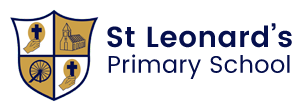In this section of the website, you will find information about our approach to teaching English at St Leonard’s.
Writing is a crucial part of our curriculum. By the end of Year 6 we intend our children to have developed a love of writing and to be able to express their thoughts and ideas clearly and creatively through written word. We will create writers who can re-read, edit and improve their own writing, and be able to confidently use the essential skills of grammar, punctuation and spelling. Children will gain confidence and pleasure as a reader and writer. Our practice is grounded in the process of shared writing with a systematic focus on securing the basics of handwriting, phonics, spelling and grammar in relation to writing skills in the text type being taught. It is also founded on the principle that children should read and be read to often, both at school and at home. At St Leonard’s, we set high expectations for all our children to take pride in their work and allow their imaginations to flourish. At St Leonard’s we teach Primary Literacy Skills through the Pie Corbett’s ‘Talk for Writing’ approach. Our teaching sequence includes three clear stages: A typical unit begins with an exciting hook into learning and some engaging activities to help children internalise the pattern of the language required. It is essential that during this initial stage the children become orally competent and can re-tell a chosen story/extract by the end of the Imitation section. The oral retelling is supported visually by a story map that the teacher has created which is accompanied by physical movements to help the children recall the story or non-fiction piece. In this way the children hear the text, say it for themselves and enjoy it before seeing it written down. Once they have internalised the language of the text, they are in a position to read the text and start to think about the key ingredients that help to make it work. This stage includes a range of reading as-a-reader and as-a-writer activities which help the children to pull the text apart and explore the content and structure. We then use a boxing-up technique (splitting the text into sections) and then help the children to analyse the features that have helped to make the text work. Once the boxing up is complete, the class starts to co-construct a toolkit for this type of text so that they can talk about the ingredients themselves – a key stage in internalising the toolkit in their heads. We give thanks to God, work together and always try our best The second stage is an exciting one for the children as they begin to explore their own ideas while sharing with the teacher. Once the children have internalised the text, they are then ready to start innovating on the pattern of the text. Younger children and less confident writers alter their text maps and orally rehearse what they want to say, creating their own version. The key focus in this stage is shared writing with the teacher that then helps the children to move away slightly from the teacher and write their own. It’s during this time that the teacher will identify specific areas for learning and give the children the opportunity to explore different skills before they are expected to write independently. The teacher will also explore and demonstrate how to accurately use ambitious vocabulary and sentence structures that, again, the children can then apply to their own writing. Demonstrating how to regularly read their work aloud enables the children to write their own versions through developing their ability to generate good words and phrases and also develops the inner judge when they start to decide why one word or phrase is best. Good ideas and examples will be displayed alongside the shared writing so when the children come to write they have models and words and phrases to support them. Throughout the shared writing, the children will be strengthening the toolkit so they start to understand the type of ingredients that may help. Once they have finished their own paragraph/s children should be encouraged to swap their work with a response partner. Then either with the aid of a visualizer or from peer/teacher feedback, the whole class can also discuss some of the more successful work and identify what made it successful. Time will be given at the end of each writing session for the teacher to provide feedback for the children to read and improve on the following day. This is the final stage of the writing process and will provide the children with the most freedom with regard to their writing. The teacher will assess what the children can do and adapt their planning in light of this. This unit will begin with some discreet teaching of an area that the teacher has identified as needing further work prior to the children writing their own piece. More examples of the text are introduced, analysed and compared before the children can have a go themselves on a related topic of their own choosing. Again, this section will end with response partner and whole class discussion about what features really worked, followed by an opportunity to edit and improve their work. This process also helps the children internalise the toolkit for such writing so that it becomes a practical flexible toolkit from memory. At the end of the unit, the children’s work will be published or displayed, either in the classrooms, wider school or on the school website. Our English curriculum is built around high-quality core texts which expose children to a wide variety of writing opportunities in which they discuss, explore and understand various texts and genres of writing. Through daily exposure to high quality texts, children’s attention is drawn to vocabulary and the language choices made by different authors and the resulting impact upon the audience and the We give thanks to God, work together and always try our best reader. Through this approach, children build a varied cumulative vocabulary of topic specific language which they are encouraged to apply within their written work. Our teaching of writing is often cross curricular and linked to class topics. This provides our children with regular opportunities to write for a range of purposes and audiences. Writing tasks are specific and meaningful, and often meet a purpose to engage children and to illustrate how their writing skills can be applied to real life contexts. Writing lessons incorporate comprehension reading skills to identify key features of genres, mood and tone. Through developing these core reading skills, our children’s understanding of language and approaches to writing in context are enhanced, allowing them to further understand the importance of both spoken and written language. Our children are afforded the opportunity to focus upon the discrete teaching of spelling and grammar and explore how this is used across various writing genres. Children are encouraged to express themselves through their writing developing both independence and stamina as writers. Our children take great pride in their work and are challenged to ensure the highest quality of presentation in all aspects of written work across the curriculum. Pupils will make good progress from their own personal starting points. By the end of Year 6 they will be able to write clearly and accurately and adapt their language and style to a range of contexts, purposes and audiences. Our pupils will acquire a wide vocabulary and have a strong command of the written word. Most importantly, they will develop a love of writing and be well equipped for the rest of their education. By teaching our pupils to become life-long independent and motivated writers, we are providing them with the most powerful cultural capital you can have – an ability to turn your voice (your thoughts, knowledge, opinions, artistry) into powerful writing.Stage 1: Imitation
Stage 2: Innovation
Stage 3: Independent invention


